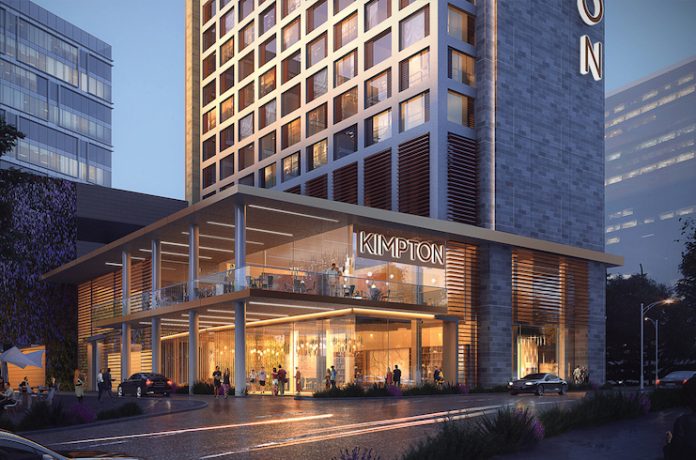As a result of a significant spike in the cost of raw materials following the pandemic, as well as a steady increase in interest rates making it more difficult to finance projects, hotel construction has slowed to a crawl within the past year.
Nevertheless, while development executives acknowledge the aforementioned obstacles, they remain hopeful that some of the factors previously constricting new-build projects will begin to loosen up going forward.
In fact, according to STR, in November and December there were some signs that development was picking up modestly after 25 consecutive months of year-over-year declines. U.S. hotel construction increased slightly in December, according to pipeline data from STR.
For 2022, the U.S. hotel industry saw only a slight increase in supply of 0.5 percent, according to STR, which is forecasting growth of 2.1 percent in 2023 by way of comparison. Furthermore, STR is forecasting the addition of 1,018 hotels and some 116,000 rooms in 2023, while 2024 is expected to see more than 2,000 hotels added.
David Messersmith, principal, PAD Real Estate—a real estate development company focused on hospitality and hospitality-branded residential development—offered his assessment on current expansion opportunities. “It is a fluid market right now. The safe and easiest route [to growth] is buying an existing asset versus ground-up development,” he said.
Messersmith added, “2022 was a really challenging environment for development. In 2023, I do see a couple of the speed bumps that slowed development maybe not going away, but definitely becoming smaller speed bumps.”
Bryan Easter, VP, development planning, Kimpton Hotels & Restaurants—IHG’s upscale boutique brand with more than 70 properties globally—cited a number of factors that have muted development. “The unusual combination of high inflation, higher interest rates, supply chain disruptions, and tight labor availability has slowed down new hotel financing and construction,” he said, adding, “We have yet to see a sharp correction to current rising [raw material] costs.”
With IHG’s robust growth trajectory of more than 40 new domestic and international Kimpton properties in the pipeline, there is still concern about the overall cost increases that have occurred over the past few years, according to Easter.
“The hospitality industry is familiar with fluctuating costs and navigating economic challenges. In many instances, construction fees are up 5 percent to 10 percent and costs are up 50 percent since 2018, and that impact is translating to higher per-key costs,” he said.
As an example, Easter noted that the company’s Kimpton Denver Tech Center—which is slated to open in 2024—experienced a 20 percent increase in hard costs between May and December of last year. Kimpton also has new projects under construction in San Antonio, Texas, and Charlottesville, Virginia. Meanwhile, Brian Quinn, chief development officer, Sonesta—a franchisor with 16 brands and more than 1,200 hotels—did note that things seem to be improving, if only slightly.
“Everything we’re hearing is that prices are stabilizing, and the supply chain is stabilizing. So, some of those challenges that six months ago you might not have been able to figure out, such as concrete, steel, wood, and timelines, seem to have eased a little bit,” said Quinn. “The cost of construction materials has mostly settled,” agreed Messersmith. However, he added, “lead times are still problematic.” But what seems to be most problematic when it comes to new construction is the spike in interest rates, which earlier this month were raised yet again by a quarter of a point, making it more difficult to make projects pencil out.
“I don’t hear the grousing that was out there six or seven months ago around costs, but the interest rates are the new ‘X factor’ thrown into the total calculation. If we didn’t have the interest rate piece, I think we’d be having a different conversation,” said Quinn.
He elaborated on the impact on current and future development prospects: “You cannot double the cost of borrowing and say that’s not going to have an effect on development. It’s going to have an effect on every segment of the real estate [sector], and it’s going to have an effect on new construction in the hotel space, but there are not a lot of places for the equity to go. Retail is going through a big change because of Amazon, and office is going through a big change because of work-from-home. . . . We’ve already seen a big run up on the residential side. I think the equity is going to continue to want to come into lodging and hospitality and [investors are] going to be willing to take a little bit lower return to manage against the inflation and prices of the product and the interest rates.”
Messersmith also acknowledged the impact of interest rates but offered some optimism.
“Interest rates, for sure, are hurting both development and acquisitions. However, many of my colleagues expect debt to loosen up this summer, and interest rates will become more competitive,” he said, adding that lender requirements “have increased” as most now require 35 percent to 40 percent equity up front as part of the deal.
Messersmith further noted the aforementioned factors have changed the hotel ownership model a bit.
“Related to interest rates, with the cost of money being high, alongside some of the other challenges that come with development, we are starting to see more hotels for lease. While this has been a common model in Europe, it is interesting to watch it expand in the U.S.,” he said.











